22 September 2010
Building stones of the Haghia Sophia
Posted by Callan Bentley
The Haghia Sophia (or “Ayasophia”) is an astounding building in old town Istanbul. It is an ancient cathedral turned mosque turned museum. Through all these incarnations, the Hagia Sophia has retained some features and had other ones added on: it is a palimpsest of architecture, symbology, and history. Walking through its soaring main chamber, or side passages and alcoves, visitors like me stand with necks bent and mouths agape. It is an unparalleled location for peeling back the layers of time.
Built in 532 CE by the Emperor Justinian, the cathedral rose on the same spot where two earlier churches had stood, the first of which was built in 360 CE. The name “Haghia Sophia” comes from the Greek for “holy wisdom.” For more than a thousand years, it served as the principal church of the Byzantine Empire. It was the world’s largest cathedral for thousands of years. The minarets were tacked on in 1453, after Constantinople fell to the Ottoman Empire:
There’s a gazillion aspects of this building to discuss, but today I’d just like to share some images of the different building stones seen in and around the Haghia Sophia. To start with, here’s a “Verde Antique” (serpentenite breccia) sarcophagus outside the building:
The floor stones in an interior hallway, worn smooth and shiny by millennia of human shuffling:
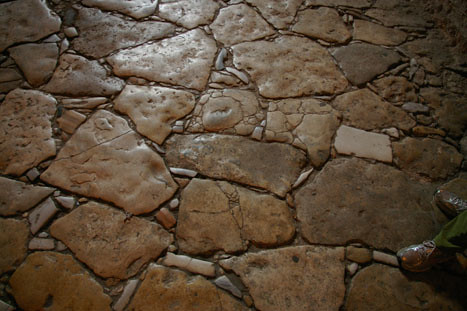
And a bunch of shots of stones used in the interior walls …
Granite (verging on unakite?):
Conglomerate:
Rhyolite porphyry:
Rhyolite porphyry with xenoliths (also used to construct a sarcophagus outside):
Marble gneiss:
Darker granitoid:
There are also some structurally interesting rocks, like this red and white marble breccia that shows pressure solution. Notice the sutured boundaries of the white grains, and their pronounced long axes, 90° to that maximum pressure direction.

Kind of reminds you of the Purgatory Conglomerate, right? (Me too.)
My favorite rock there is this lurid, gory red/white/black marble gneiss, as it displays ptygmatic folding (elsewhere it is also boudinaged):

I wish I had more photos of this stuff. It’s great. It reminds me of guts!
Here it is in a typical display (pardon the blurriness of the photo): they “fillet” the rock and spread it open in the manner of a Rorschach blot. This produces an attractive symmetrical design, with minimal artistic effort:
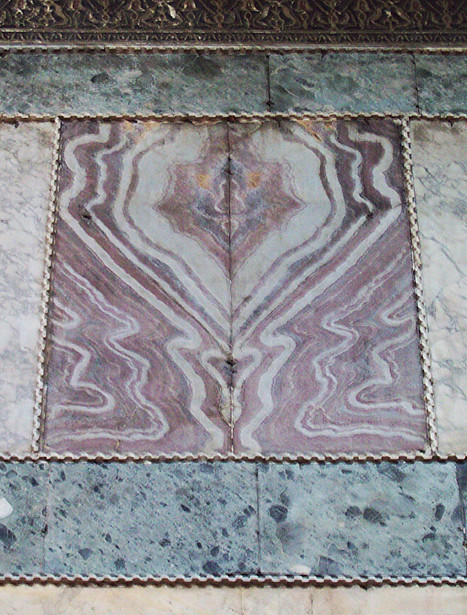
Another nice “butterfly” spread, this one of folded marble gneiss:

Another one:

Look close at this one. Note the little gray crosses in there? Let’s zoom in…
Here’s one closer-up:
These are ancient Christian crosses, or rather, the holes where ancient Christian crosses were once mounted on the wall. When the Haghia Sophia was converted to a mosque in 1453, these Christian symbols were removed, and the holes cemented over to obliterate traces of the old religion. Here’s another one, where the cement has fallen away:
Along similar lines, here’s some Arabic script carved into the railing of the second floor, marring a lovely marble breccia:

Stuff like this just floors me. I mean, think about all the different people to lean on this railing over the past 1500 years. The Haghia Sophia’s history is so deep, with so many distinct overlapping layers. The mind reels…
A fantastic concentration of building stones may be found at the “Coronation” spot on the main floor of the building, where Byzantine kings were crowned:
After several pleasant hours touring the Haghia Sophia, we got lunch at a great cafe nearby. Lily got lentil soup:
…and I got an amazing pide, the Turkish style of “pizza”:
Delicious rocks followed by delicious repast! Can’t complain…




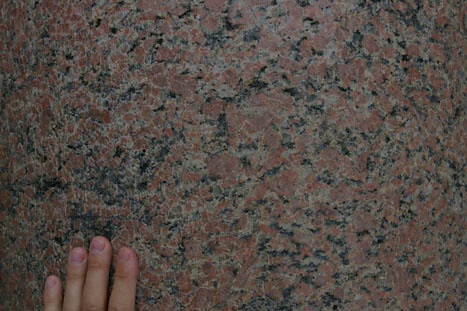
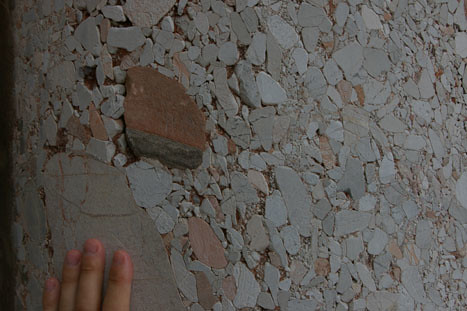
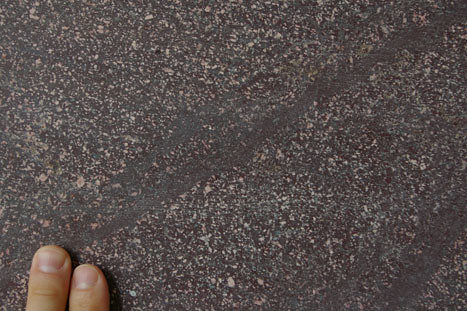
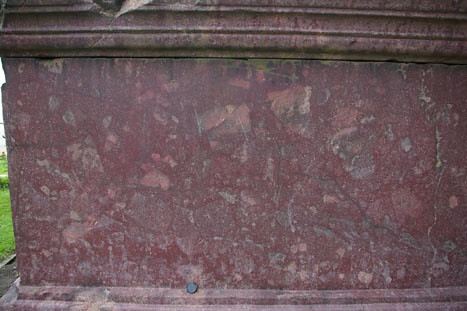


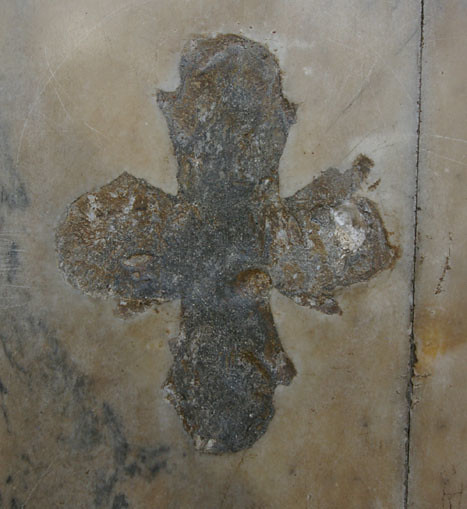
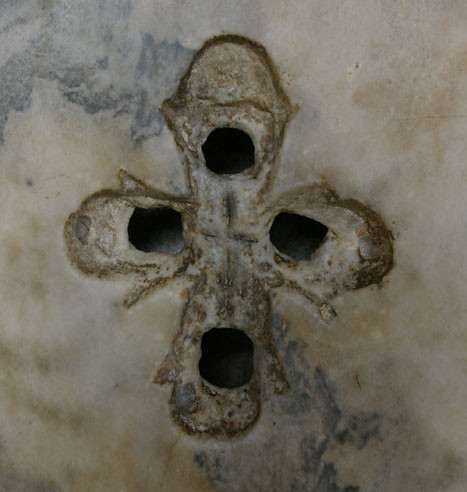
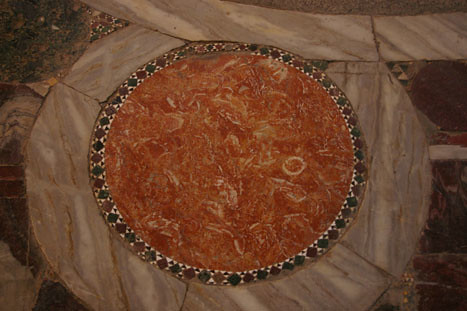
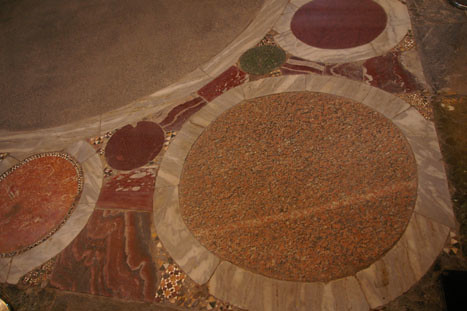
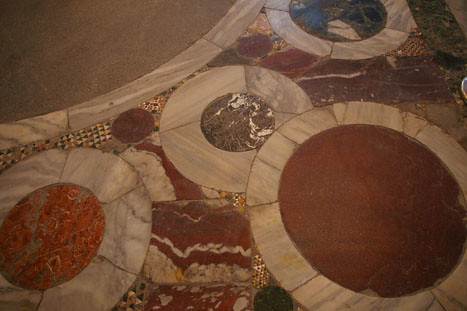
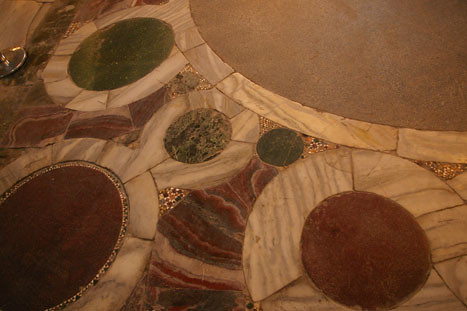
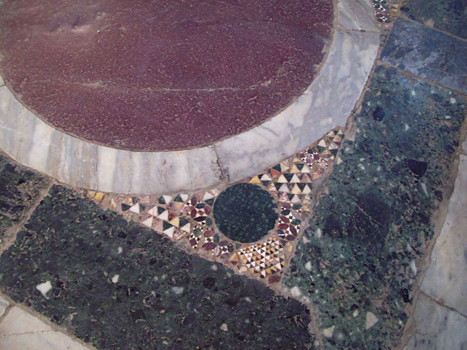

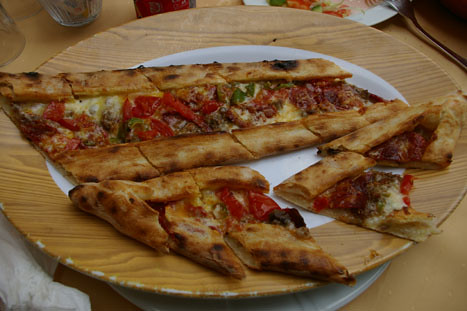
 Callan Bentley is Associate Professor of Geology at Piedmont Virginia Community College in Charlottesville, Virginia. He is a Fellow of the Geological Society of America. For his work on this blog, the National Association of Geoscience Teachers recognized him with the James Shea Award. He has also won the Outstanding Faculty Award from the State Council on Higher Education in Virginia, and the Biggs Award for Excellence in Geoscience Teaching from the Geoscience Education Division of the Geological Society of America. In previous years, Callan served as a contributing editor at EARTH magazine, President of the Geological Society of Washington and President the Geo2YC division of NAGT.
Callan Bentley is Associate Professor of Geology at Piedmont Virginia Community College in Charlottesville, Virginia. He is a Fellow of the Geological Society of America. For his work on this blog, the National Association of Geoscience Teachers recognized him with the James Shea Award. He has also won the Outstanding Faculty Award from the State Council on Higher Education in Virginia, and the Biggs Award for Excellence in Geoscience Teaching from the Geoscience Education Division of the Geological Society of America. In previous years, Callan served as a contributing editor at EARTH magazine, President of the Geological Society of Washington and President the Geo2YC division of NAGT.
I wonder where they got all those different stones from. One likely source for the marble was the island of Prokonnesos (now Marmara) in the Sea of Marmara where there were/are marble mines.
Beautiful!
What an appetizing day!
Gorgeous photos!
Dear Blogger,
Have been following you since NOVA, this post, the building stone of Hagia Sophia, inspired me to look for building stones in tourists places, recently found some meta rocks with quartz veins and some folded rocks in the Summer Palace of Chengde, China; and sadly the great wall, much if it, has been rebuilt by modern materials.
Wonder how to load the photo for your comment?
Why don’t you post your photo elsewhere (Flıckr, perhaps?) and then leave a comment here wıth a lınk to ıt? Comments here are not set up to allow photos to be posted, ın hopes of headıng off offensıve spam ımages. I’m lookıng forward to seeıng your photos from Chına!
[…] So, somewhere on that trip, I said to her, “Look. I can’t lose you. I can compromise. What do you say we get married and have a kid?” And she said yes, with relief and delight that she didn’t have to take that wrenching action. We made it formal a few days later by buying a diamond ring from the Grand Bazaar in Istanbul, and I formally proposed (down on my knee, tears in my eyes) to Lily in the shadow of the Haghia Sophia. […]